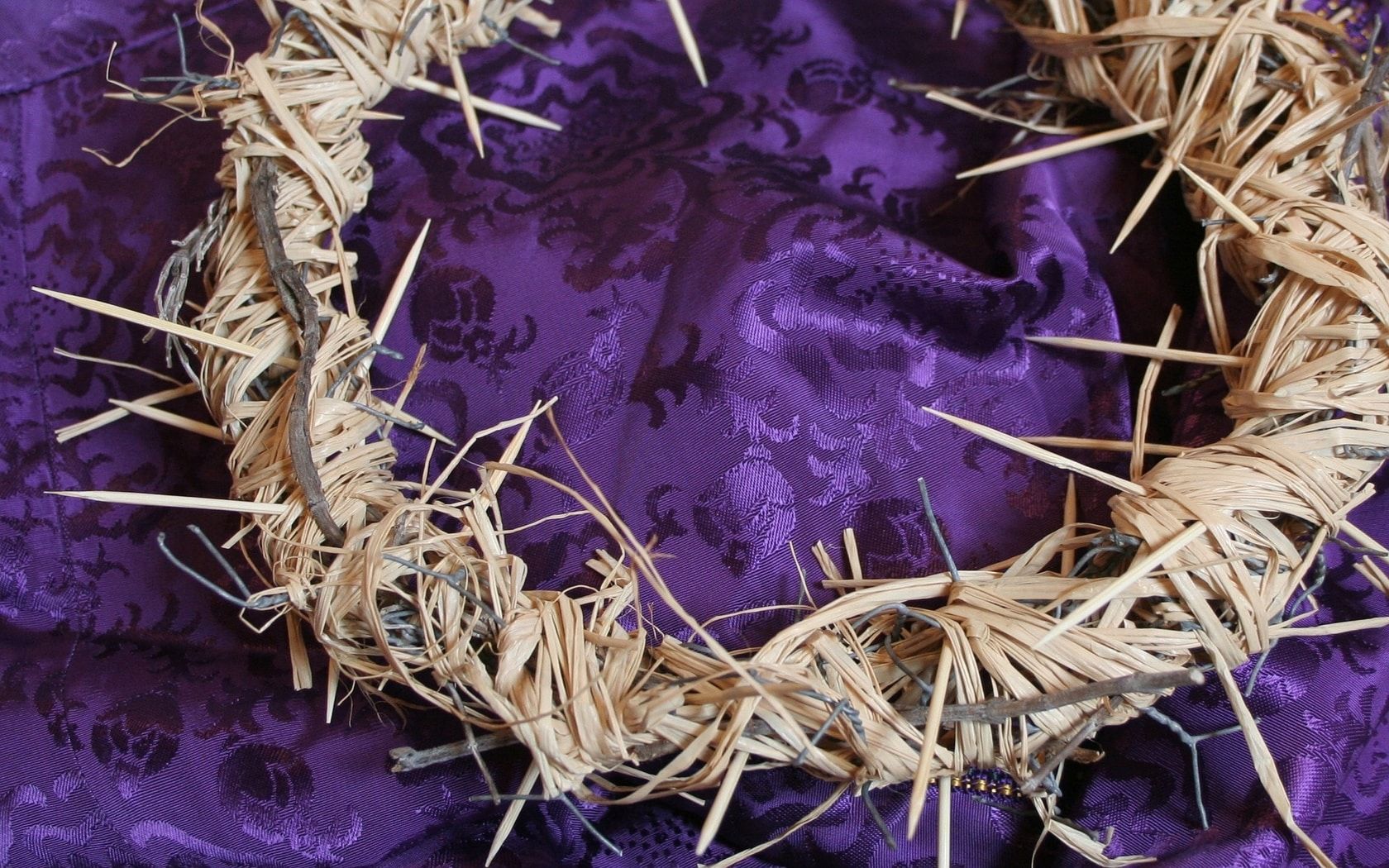Since Ecuador is primarily a Roman Catholic country, religion plays a major part in the culture. The most important event on the religious calendar is Semana Santa, or Holy Week/Easter that always falls some time in March or April. In Quito the locals go all out to show their devotion to this annual festival with passionate religious pageantry and colorful indigenous traditions that are worth being a part of, even if you’re not religious. If you’re in Quito during Holy week this year (April 14 to April 21, 2019) here’s what to expect.
What is Holy Week?
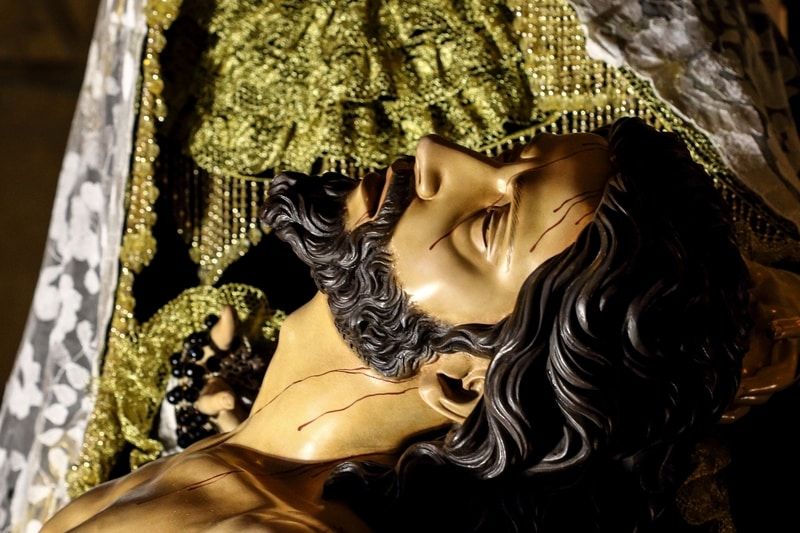
It marks the annual commemoration of the Passion, Death, and Resurrection of Jesus Christ. The week begins on Palm Sunday, the historic day when Jesus entered into Jerusalem and ends a week later on Easter Sunday when he was resurrected. The first three days observe different events described in the Bible such as Jesus’ anointment, Jesus’ prediction of his own death, and the arrangement of the betrayal by Judas. Holy Thursday celebrates the Last Supper (which is where the Eucharist or Holy Communion comes from) then follows Good Friday when Jesus was crucified, Holy Saturday and Easter Sunday when Jesus was resurrected.
Substitute chocolate for fanesca
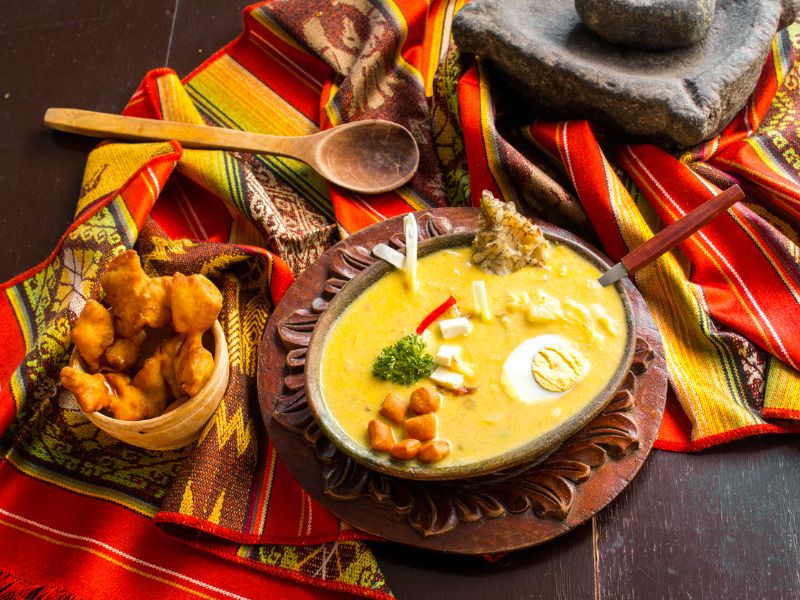
Forget Easter eggs, you want to be eating fanesca during Easter in Quito. The biggest giveaway that Holy Week is approaching is when you start seeing signs for fanesca appearing in restaurants. It’s a famous dish and tradition local to Quito that consists of a tasty soup of 12 beans and grains, codfish, potatoes, peanuts, eggs and vegetables such as butternut squash, onions and cabbage. While it’s a meal in itself, it’s usually served with molo (a combination of mashed potato and cheese). According to some sources, the 12 beans and grains represent the twelve apostles and the fish represents Christ, but according to others it’s a dish marking the harvest celebrations of the pre-hispanic indigenous culture that took place around the same time. Whatever its roots, local restaurants fiercely compete every year for the title of Best Fanesca in the city so you’d better get your fill of it.
Events to see during the week
Wednesday — Arrastre de Cuadras (Dragging of the Capes ritual)
This ceremony usually takes place on the Wednesday in the Cathedral of Quito. It begins with the Archbishop of Quito leading the clergy up the nave carrying a large black flag with a red cross on it. Priests, dressed in hooded black robes, lie face down on the floor while the flag is waved over them, an action that symbolizes the transfer of the courage of Jesus to his followers.
Thursday — candlelit processions
Every year there’s an atmospheric candlelit procession through Quito’s historical town led by folkloric dance companies. Members of the procession hold candles and represent important Catholic icons such as the Virgin of Legarda, the Virgin of Guadalupe, and various other saints.
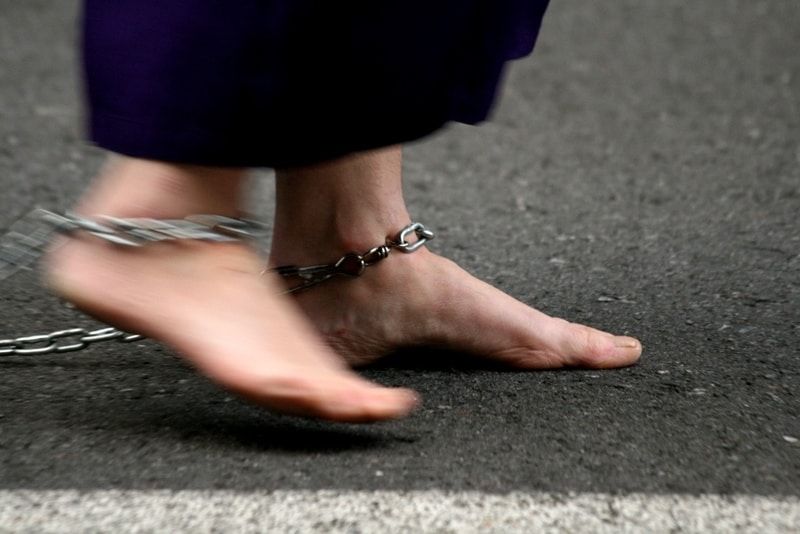
Good Friday — Jesus of Great Power Procession / Procession of the Penitents
This is the largest and most haunting of the ceremonies for the week. During this event, some quarter of a million people take to the streets of Quito to witness or participate in this colorful procession, so we don’t suggest trying to go anywhere else that day. The three-hour event that represents Jesus’ walk with the cross through the city of Jerusalem, starts at Quito’s San Francisco cathedral at midday and moves around the colonial town up to the Basilica del Voto Nacional and back to the square.
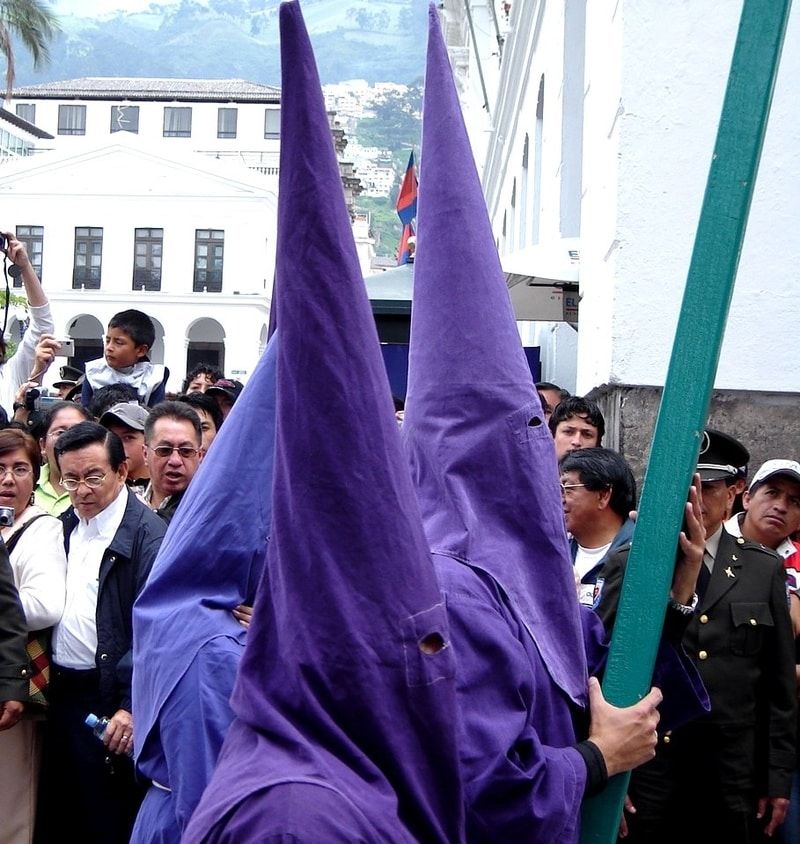
It’s a very dramatic spectacle. The main protagonists are some 1,300 anonymous cucuruchos (men and women wearing long dark purple robes and tall pointy hats) who are penitents asking for forgiveness for their sins (the color purple represents atonement). Other people carry heavy wooden crosses or statues of the Virgin Mary on their shoulders, or dress like Christ and walk barefoot, inflicting pain on their exposed skin with poison ivy or cacti and real thorn crowns. You may even see people whipping themselves in punishment. Some of the women also wear veils covering their faces to represent Saint Veronica, the woman who gave Jesus her veil to wipe his face.
If you’re going purely to spectate, get there a couple of hours before noon as it can be tricky to see anything through all the crowds.
Saturday of Glory
On the Saturday, the eve of Christ’s resurrection, events take on a more positive, celebratory tone and the streets are filled with people and music. It’s a day when families and friends get together.
Easter Sunday
Most Ecuadorians will attend church with their families and have a big meal together so if you haven’t tried any fanesca by now then this is the day to do it.
The devils also have their own procession
Elsewhere on Good Friday, in the Andean town of Alangasi, just south of Quito, things take on a much darker air in a decidedly different type of ceremony that involves the burning of rags, symbolizing the fires of eternal punishment. Locals paint themselves red and dress as demons parading through the center of town carrying items of temptation such as wads of cash and pornography.
What else?
In addition to the traditional religious Holy Week events, there are concerts and folkloric dancing all over the city so it’s a good time to just wander the streets and see what you find. For more updated information about events taking place this year, check here.
Got any other useful info about enjoying Holy Week in Quito? Share your advice with our readers in the comments section below.
Originally published on Ailola by Sophie Lloyd on April 2, 2019.
